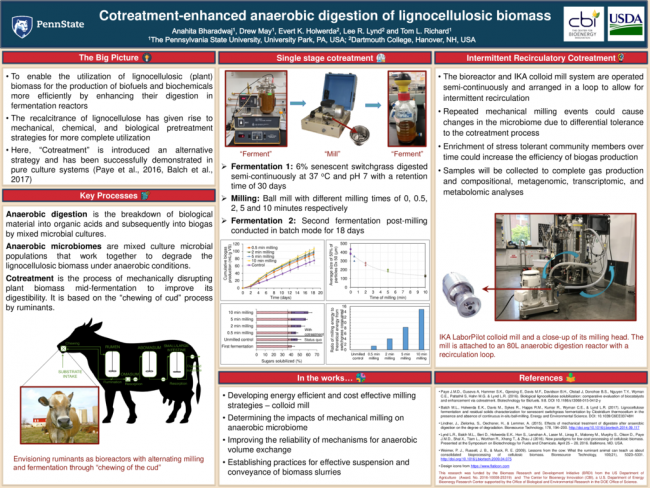Anaerobic digestion is a method of biomass degradation via microbial activity in the absence of oxygen. This process creates useful products like digested solids, which can be used as fertilizer, and biogas, which can be upgraded to produce renewable natural gas. Lignocellulosic materials, like grasses, woody materials, and agricultural residues are favored for this process due to their affordability and availability. These materials, however, are difficult for microbes to break down due to their complex molecular structure. This necessitates treatment before fermentation to accelerate biodegradation through processes known as “pretreatment” that can be energy, chemical, and cost intensive. Cotreatment, a method of simultaneous fermentation and treatment through intermittent mechanical milling, seeks to reduce these inputs, making the process more sustainable and economical. A natural analog to cotreatment can be found in cows, which increase the efficiency of their digestion by repeatedly chewing the cud, a method of mechanical treatment, while plant material ferments in its stomach. This process is thought to enhance digestion of material by reducing particle size, disrupting lignocellulosic structure, and increasing surface area available to microbial attack. Research in this area currently is exploring topics including optimal milling styles, microbial response to changes in conditions and milling frequencies, and process energy consumption. Further development of cotreatment could result in the significant improvement to the anaerobic digestion process, which, in turn, could serve as an effective and robust strategy for organic waste treatment, use of energy crops to produce renewable natural gas, and ultimately contribute towards carbon drawdown.
Day
Tuesday Poster Session
Related Conference Themes
Electricity Generation
Materials & Waste


